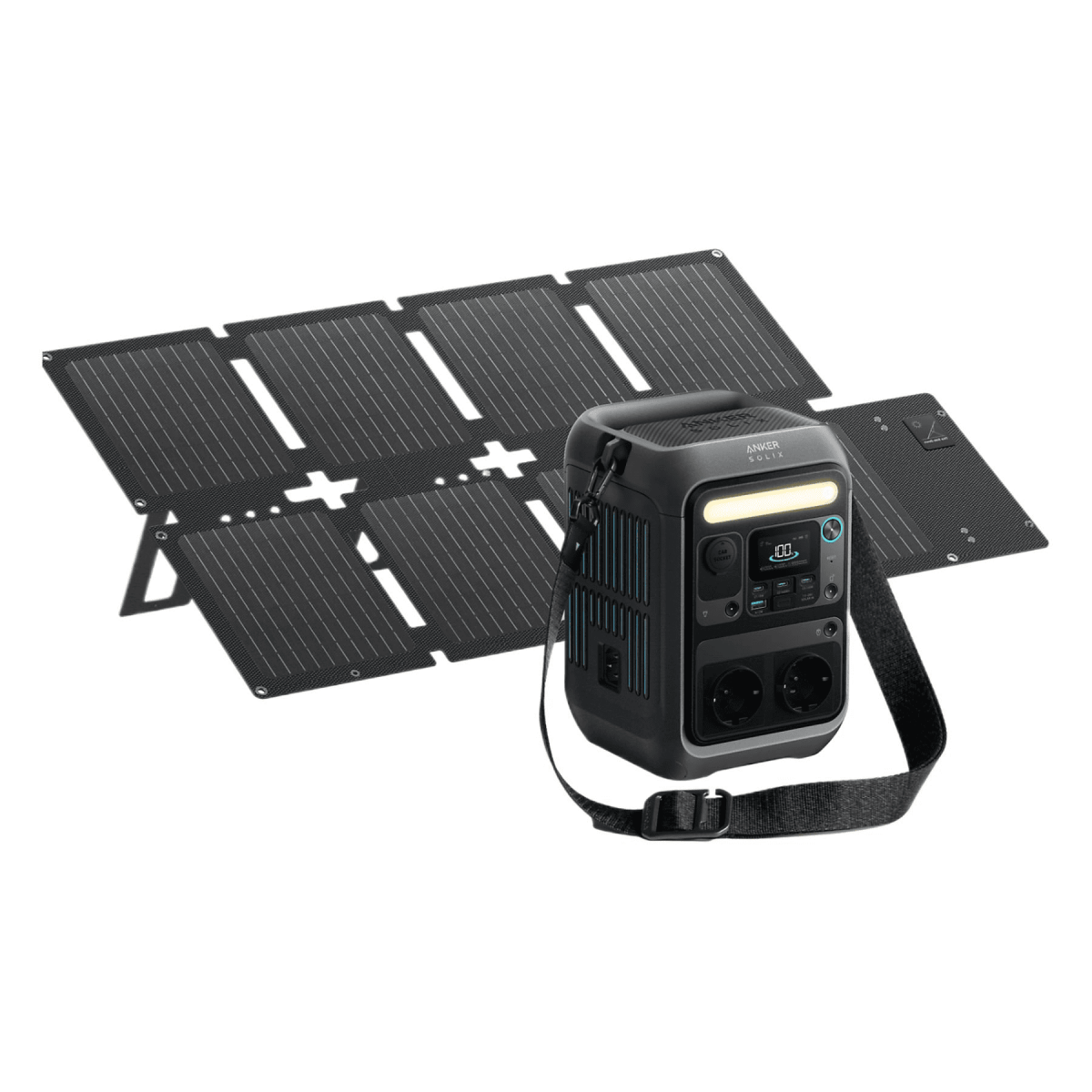You've got the powerful and compact Anker SOLIX C300X, a fantastic portable power station for everything from weekend camping trips to home backup. But to truly unlock its off-grid potential, you need the right solar panel. Choosing a panel can feel overwhelming with all the talk of watts, volts, and connectors. That's why we at TeqClub have created this definitive guide to help you select the perfect solar panel, ensuring you get the fastest, most efficient charge every time. Let's dive in!
1. Understanding the Anker SOLIX C300X Solar Input
Before you buy a panel, it's crucial to understand what the Anker SOLIX C300X can handle. Feeding it the wrong voltage can be inefficient or even damage the unit. The C300X is designed with very specific solar input requirements, which are your golden rules for choosing a compatible panel.
Here are the key specifications you need to know:
- Maximum Solar Input: The C300X can accept up to 300W of solar power. While you can use a panel rated higher than 300W, the power station will only draw a maximum of 300W from it.
- Voltage Range (Voc): This is the most critical spec. The C300X accepts a voltage range of 12V to 60V DC. The "Voc" or Open-Circuit Voltage of your solar panel(s) MUST fall within this range.
- Connector Type: The solar input port on the C300X uses a standard XT-60 connector. Most portable solar panels designed for power stations come with this connector, but it's always wise to double-check or ensure you have an adapter if needed.
Matching your solar panel to these specs ensures safety, compatibility, and the best possible charging speeds for your power station. ✅
2. What is MPPT and Why Does It Matter?
You'll often see the term MPPT mentioned in relation to solar charging. The Anker SOLIX C300X comes equipped with an advanced MPPT charge controller, which is a massive advantage. But what does it do?
Think of Maximum Power Point Tracking (MPPT) as a smart DC-to-DC converter. A solar panel's power output (a combination of its voltage and current) fluctuates constantly due to changing sunlight, temperature, and shading. An MPPT controller continuously monitors the panel's output and adjusts its own electrical properties to find the "maximum power point"—that perfect sweet spot of voltage and current that harvests the most possible energy. This means you get a faster and more efficient charge, especially in less-than-ideal conditions like on a partly cloudy day. Thanks to its built-in MPPT, your C300X is already optimized to squeeze every last drop of power from the sun.
3. Recommended Solar Panel Setups for Your C300X
Now for the fun part: choosing your panels. Since we're not focusing on specific brands, we'll recommend setups based on your primary needs: portability or maximum power. Remember to ensure any panel you choose meets the 12-60V (Voc) requirement.
For Maximum Portability and Flexibility
A 100W portable, foldable solar panel is an excellent choice for those on the move. They are lightweight and easy to pack. To get more power, you can link multiple 100W panels together. We recommend connecting two or three 100W panels in series. When connected in series, their voltages add up. For example, two panels with a Voc of 22V each would result in a combined 44V, which is perfect for the C300X's 12-60V range and will provide up to 200W of power.
For Maximum Charging Speed
If your goal is to recharge the Anker SOLIX C300X as quickly as possible, a single, larger panel is the most straightforward solution. Look for a 200W or 300W solar panel. These come in both large foldable "briefcase" styles and as rigid panels for more permanent setups (like on a van or cabin). A single panel simplifies setup and reduces the number of cables. A 300W panel will allow you to hit the C300X's maximum solar input, delivering the fastest possible charging times under ideal sunny conditions. ☀️
4. Tips for Optimizing Solar Charging Efficiency
Owning the right panel is only half the battle. How you use it makes a huge difference in charging performance. Follow these simple tips to maximize your solar harvest:
- Positioning is Key: Always aim your panels directly at the sun. The ideal angle is perpendicular to the sun's rays. A good trick is to adjust the panel until it casts the smallest possible shadow.
- Stay Out of the Shade: Even partial shading on a small section of a solar panel can dramatically reduce its overall power output. Find a spot with a clear, unobstructed view of the sky.
- Keep Them Clean: A surprising amount of efficiency is lost to dust, dirt, pollen, and bird droppings. Before each use, give your panels a quick wipe with a soft cloth and a little water to ensure maximum light absorption.
- Mind the Temperature: Solar panels are more efficient in cool, sunny weather than in hot, sunny weather. If possible, allow for some airflow behind the panel to help keep it cool.
5. Final Thoughts: Power Your Adventures
Choosing the right solar panel for your Anker SOLIX C300X doesn't have to be complicated. By understanding the key input specifications—300W max input, a 12-60V range, and an XT-60 connector—you are fully equipped to make an informed decision. Whether you prioritize the portability of a 100W panel or the raw power of a 300W setup, you can now confidently create a solar charging system that fits your lifestyle.
With the right solar companion, your C300X transforms from a portable battery into a limitless source of clean energy. Ready to harness the power of the sun? Find the perfect solar panels and accessories for your Anker SOLIX C300X at TeqClub today!
Have questions about a specific panel or setup? Drop them in the comments below, and don't forget to share this guide with other Anker users!

